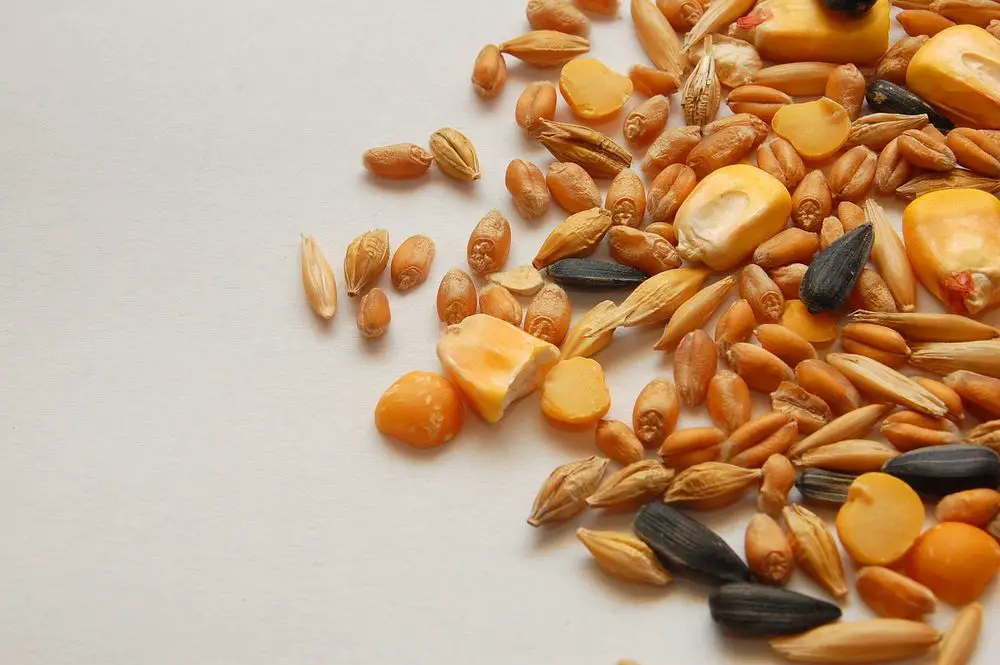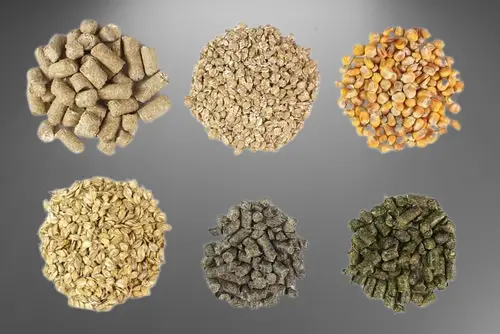
Forget those images of cattle munching on endless green pastures – there’s so much more to cattle feed than meets the eye! What you choose to put in your troughs directly impacts your cattle’s health, production, and your bottom line. Whether you’re a seasoned rancher or just getting started, this guide will unveil the secrets to making the most of cattle feed and ensure your herd is thriving.
Cattle Nutrition Basics
Think of cattle like high-performance athletes – they need the right fuel to perform their best. A balanced diet of proteins, carbohydrates, vitamins, minerals, and plenty of water is essential. Here’s why:
- Building Blocks: Protein helps with growth and repair, while carbs provide energy.
- Staying Healthy: Vitamins and minerals boost immunity, reproduction, and overall wellbeing.
- Optimal Output: Whether it’s beef production, milk yields, or even a shiny show coat, proper nutrition is key.
Types of Cattle Feed Demystified

Let’s break down the feed aisle lingo:
- Forages: The backbone of a cow’s diet. This includes hay, fresh pasture, and silage (fermented grasses).
- Grains: High-energy powerhouses like corn, oats, and barley. Used strategically for growth or increased milk production.
- By-products: These ingredients offer protein and energy and are derived from things like soybeans, distiller’s grains, or citrus pulp.
- Supplements: These come in blocks, tubs, or loose mixes to fill in any vitamin or mineral gaps in your feed.
Choosing the Right Feed for Your Herd
No single feed is perfect for every situation. Consider these factors:
- Breed: Some breeds are naturally more feed-efficient than others.
- Age and Stage: A growing calf has different needs than a mature cow or a pregnant heifer.
- Goals: Are you raising beef cattle, dairy cows, or show animals? Your goals influence feed choices.
- Environment: The quality of your pasture and the availability of affordable feedstuffs will come into play.
Reading Feed Labels: What to Look For
Feed labels aren’t meant to confuse you! Here’s how to decipher them:
- Crude Protein: This tells you the percentage of protein in the feed.
- Energy: Look for terms like TDN (total digestible nutrients), which indicate energy content.
- Fiber: Important for digestion and rumen health.
- Vitamins & Minerals: Check that the feed meets your cattle’s essential requirements.
Feeding for Success: Tips for Optimal Health and Production

- Test Your Forage: Knowing the nutritional value of your hay or pasture helps in creating balanced rations.
- Be Body Condition Savvy: Monitor your cattle’s body condition score (BCS) to ensure they’re not too thin or too fat.
- Graze Smartly: Rotational grazing can improve your pasture’s productivity and provide higher-quality forage.
- Water, Water, Water: Fresh, clean water is the most crucial nutrient of all!
FAQ SECTION
- Q: Why do cattle industries use antibiotics in their feed?
- A: Antibiotics are sometimes used in cattle feed for three primary reasons: to prevent disease, treat illness, or improve growth rates. It’s important to use them responsibly under veterinary guidance to minimize the risk of antibiotic resistance.
- Q: What to feed cattle with diarrhea?
- A: First, prioritize rehydration with electrolytes. Offer good-quality hay and consult your veterinarian. They may recommend temporary dietary changes or medications depending on the cause.
- Q: How much soybean meal to feed cattle?
- A: There’s no one-size-fits-all answer. The amount depends on the cattle’s age, weight, protein requirements, and other feed components. A nutritionist can help you calculate the right amount for your situation.
- Q: Core Keeper how to feed cattle?
- A: Unfortunately, you can’t directly feed cattle in the game Core Keeper. It’s a different type of creature they use for other purposes.
- Q: Which feed additive should be used to control worms in beef cattle or swine?
- A: Several FDA-approved de-worming additives are available. Choosing the right one depends on the specific worm infestation. Always consult your veterinarian for the best option and to follow administration guidelines.
- Q: What to feed beef cattle?
- A: The foundation of their diet is typically forage (grass, hay). Depending on the stage of growth or production, beef cattle may also receive grains, supplements, or by-products for additional energy or protein.
- Q: How much beet pulp to feed cattle?
- A: Similar to soybean meal, the amount varies. Beet pulp is a good source of fiber and energy but work with a nutritionist to integrate it into a balanced ration.
- Q: How much feed do cattle need?
- A: Cattle typically consume around 2-3% of their body weight in dry matter feed per day. However, specific requirements depend on factors like breed, production stage, and forage quality.
- Q: What do you feed Wagyu cattle?
- A: Wagyu cattle are prized for their marbled meat. Their diets often include a combination of forages, high-quality grains, and sometimes specialized supplements to enhance fat development.
Absolutely! Here’s the rest of the blog post:
Cattle Feed Myths and Misconceptions
Let’s bust some common myths!
- Myth 1: All cattle need grain to thrive.
- Fact: Many cattle can do well on a forage-based diet, especially with good grazing management.
- Myth 2: Antibiotics in feed are always bad.
- Fact: While antibiotic overuse is a serious concern, there are times when targeted use is necessary for animal health and welfare under veterinary supervision.
- Myth 3: The most expensive feed equals the best feed.
- Fact: Cost doesn’t always equal quality. A feed analysis and understanding your herd’s needs are crucial for making smart choices.
When to Get Expert Advice
Don’t go it alone! Here’s when to reach out for help:
- Nutritionist: They can design custom feed rations tailored for your herd and goals.
- Veterinarian: Essential for addressing health problems that might be related to nutrition.
- Extension Agents: A great source for local recommendations and educational resources.
Beyond the Basics: Advanced Cattle Nutrition (Optional section for more experienced readers)
- Rumen Health: Learn about the importance of healthy rumen microbes for optimal digestion.
- Feed Additives: Explore the use of probiotics, ionophores, and other additives that can influence performance.
- Alternative Feedstuffs: Discover how to incorporate unconventional feed sources to reduce costs or boost nutrition.
Conclusion
Cattle feed isn’t just about filling bellies – it’s the foundation for a successful and sustainable cattle operation. By understanding the essentials, busting the myths, and knowing when to seek help, you’ll empower yourself to make informed feed choices for a healthy, productive herd.
Don’t be afraid to experiment, learn from others, and adjust your feed strategy over time. And remember, a well-fed cow is a happy cow!
